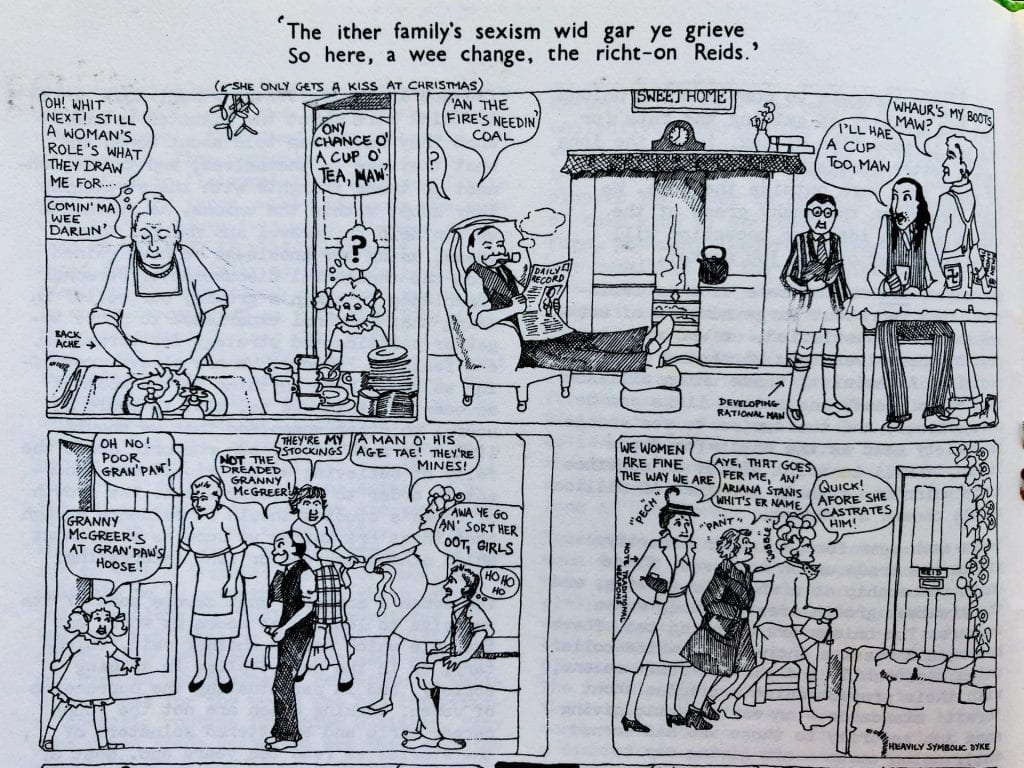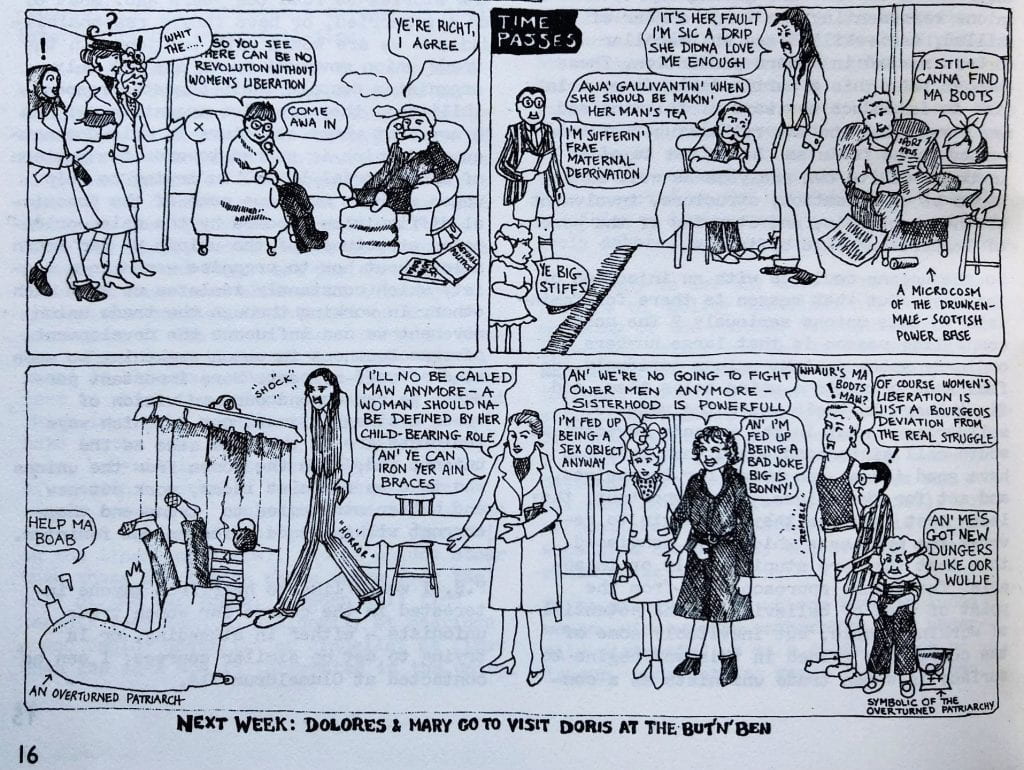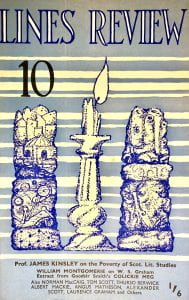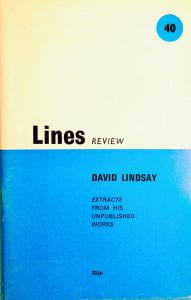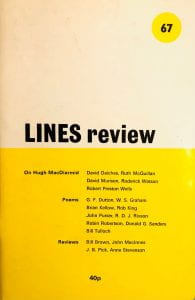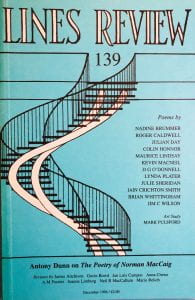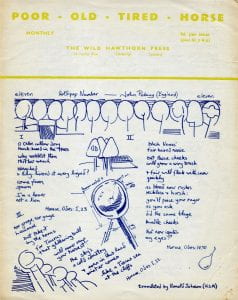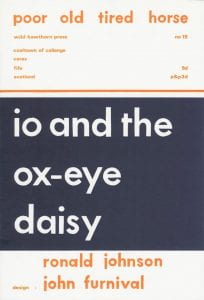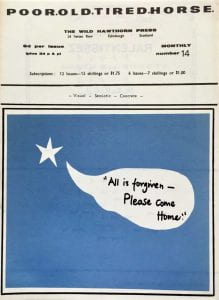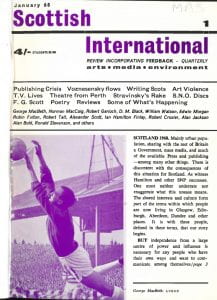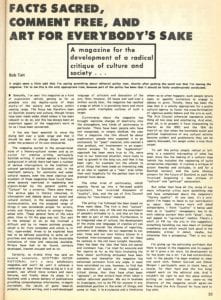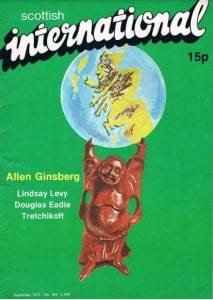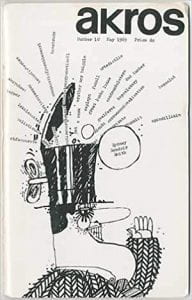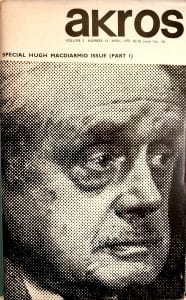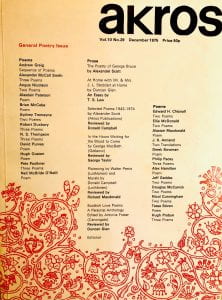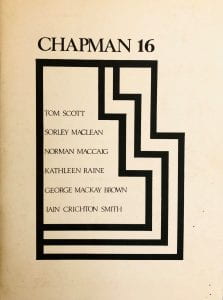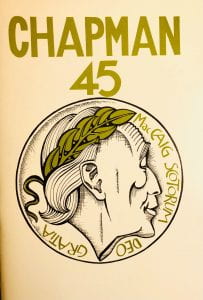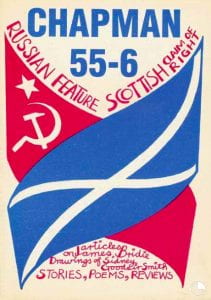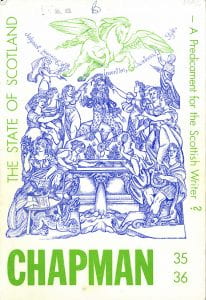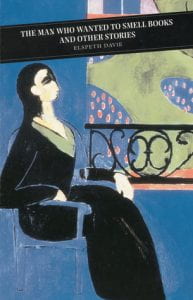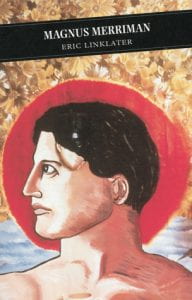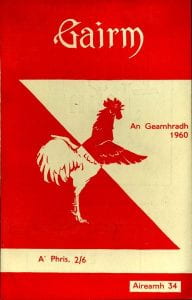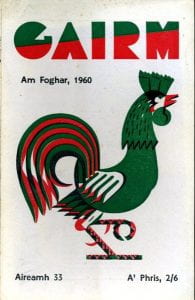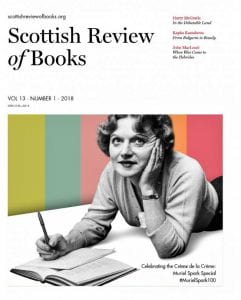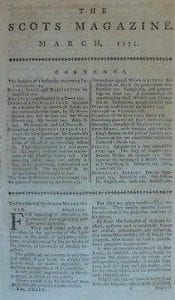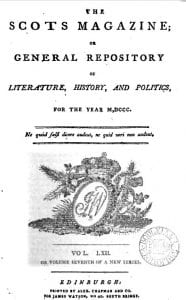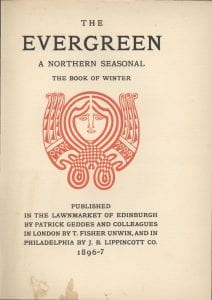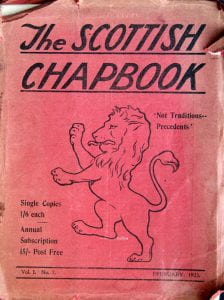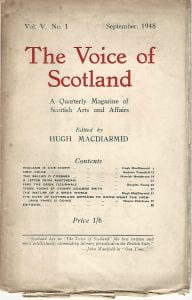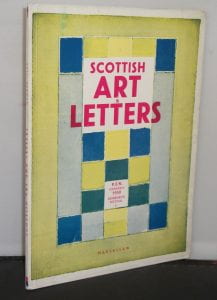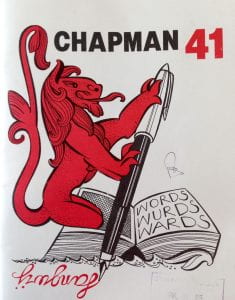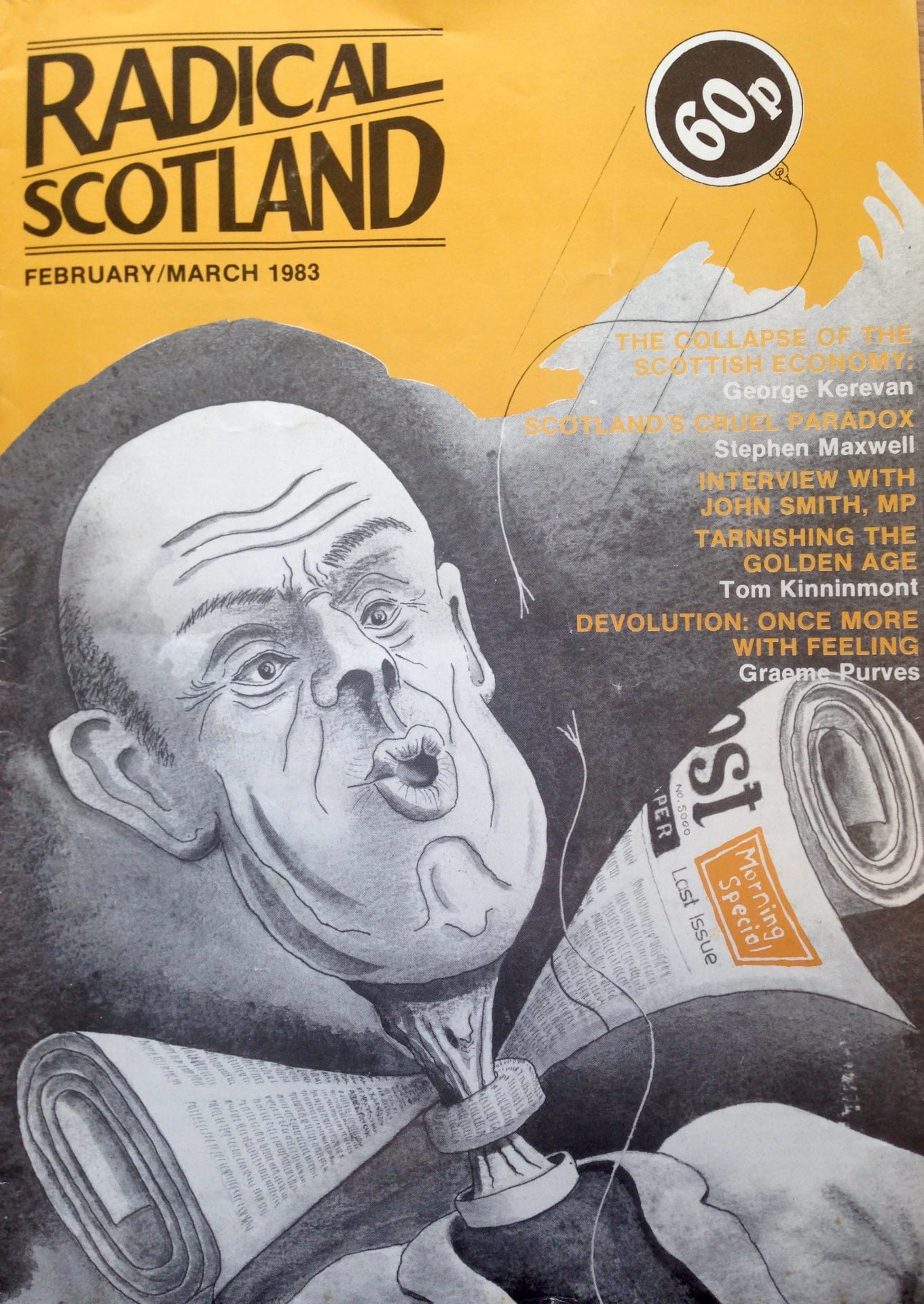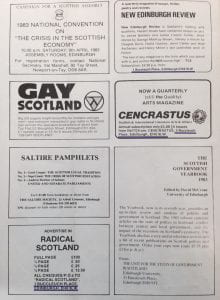A key aim of the network is recovering lost or forgotten magazines. Ben Jackson revisits Question Magazine, ‘the independent political review for Scotland’
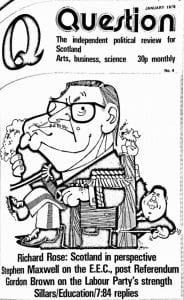 On 6 September 1977 Neal Ascherson, at that time political correspondent of the Scotsman, confided to his diary some gloomy observations about the publishing scene in Scotland: ‘As Tom Nairn predicted to me a few days ago, the publication of Q magazine is stopped. The figures are sickening. The circulation was down to about a thousand (max. 1500 a few months ago), and only five out of 2000 libraries in Scotland, and only two universities out of eight subscribed.’ Ascherson was struck by the incongruity of this failure taking place at the very moment that Scottish politics and culture had never seemed more dynamic: ‘It’s unbelievable that in the most important decade of its recent history, at the moment when the country should be alive with fateful debates, Scotland can’t support one serious political review.’[1]
On 6 September 1977 Neal Ascherson, at that time political correspondent of the Scotsman, confided to his diary some gloomy observations about the publishing scene in Scotland: ‘As Tom Nairn predicted to me a few days ago, the publication of Q magazine is stopped. The figures are sickening. The circulation was down to about a thousand (max. 1500 a few months ago), and only five out of 2000 libraries in Scotland, and only two universities out of eight subscribed.’ Ascherson was struck by the incongruity of this failure taking place at the very moment that Scottish politics and culture had never seemed more dynamic: ‘It’s unbelievable that in the most important decade of its recent history, at the moment when the country should be alive with fateful debates, Scotland can’t support one serious political review.’[1]
Q magazine – or, to give the publication’s full title, Question – has not subsequently acquired the cult status now enjoyed by publications such as Radical Scotland or Scottish International, nor has it been subject to the same level of academic attention. It was fated to have a shorter lifespan – running from October 1975 to August 1977, a total of 34 issues. Crucially, it did not embody an obvious political or cultural agenda that would enable it to be easily slotted into subsequent historical narratives. Nonetheless, the magazine was an audacious presence in Scottish public life that deserves to be more widely discussed. Q was an attempt to produce a regular magazine of political and cultural commentary in Scotland in the same vein as the New Statesman, the Spectator, or even the Economist. It was not intended to be a small-scale publication circulated among the cognoscenti but rather an influential public forum sold in newsagents while a new Scotland confidently awaited its devolved destiny. The first issue announced the magazine’s mission: ‘Q is an independent political review for Scotland, not tied to any political party. It is the editorial policy of Q that the review is open to interesting contributions, whether they agree with Q’s opinion or not. With the coming of the Assembly there is clearly a great need for a review such as Q.’[2]

It was certainly true that the pages of Q published contributions from all sides of the political debate in Scotland. But there was also some artifice in this description since the team behind the magazine had a discernible leaning towards the SNP. The founder and editor of the magazine was Peter Chiene, a lawyer and supporter of the SNP. He produced the magazine with a small editorial board: Alfie Donaldson, a law lecturer originally from Northern Ireland but based in Edinburgh; Michael Grieve, the prominent journalist and former Vice-President Publicity of the SNP (and of course son of Christopher Grieve/Hugh MacDiarmid); and, perhaps most intriguing of all, Alexander ‘Sandy’ McCall Smith, at that time a legal academic but later of course the world-famous novelist who authored The No. 1 Ladies Detective Agency series (McCall Smith officially became Q’s deputy editor later in its run). Michael Spens, the architect and critic (and SNP parliamentary candidate), was also added later to the editorial board.
Q initially appeared monthly, in a compact 24-page format, before moving to a fortnightly publication schedule from October 1976 (No. 13). The fortnightly magazine increased its size to tabloid and reduced the page count to 12. In design terms, Q was an orthodox, even rather dry, publication: print was laid out across several columns with the odd pull quote to break up the text. Initially, there were few images beyond the cover, a cartoon or two, and the occasional photo. The use of images increased markedly when the magazine shifted to its new tabloid format and by the end of its run Q’s design had become much slicker. Editorially, the magazine followed analogous publications edited from London in providing a powerful blend of serious political commentary; in-depth coverage of business and science; and a strong culture section that afforded plenty of space to the high arts and book reviews. Longer features were mixed with regular fixtures such as a diary-style set of short observations on the news, ‘Flyter’; a short editorial column expressing Q’s official view; a letters page; and a crossword. What set Q apart from, say, the New Statesman or Spectator, obviously, was that it viewed the world through a distinctive Scottish lens.
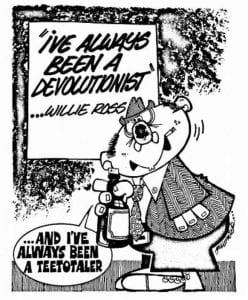
Reading Q now is to be reminded of the vibrancy of Scottish political culture in the 1970s – a time of high hopes and trenchant debates, populated by a cast of fascinating characters, many of whom would continue to play a significant role in Scottish and British public life well into the twenty-first century. Q’s contributors included an eclectic list of luminaries such as Neal Ascherson, Alan Bold, Gordon Brown, Henry Drucker, Owen Dudley Edwards, Duncan Glen, Christopher Harvie, James Hunter, Neil MacCormick, Stephen Maxwell, Edwin Morgan, Tom Nairn, Jim Naughtie, George Reid, Malcolm Rifkind, David Steel, Jim Sillars, Teddy Taylor, Brian Wilson and many others. As this list suggests, a major deficiency of Q was that it printed almost no articles by women and provided only the most meagre coverage of the women’s movement (in this it was representative of the deficiencies of Scotland’s 1970s political culture more generally). As best I can tell (some articles were written anonymously and some writers used initials rather than full first names), only three female authors ever wrote feature-length articles for the magazine: the author Naomi Mitchison (twice); the then director of the Edinburgh Film Festival, Lynda Myles; and Alison Bruce, a researcher at Glasgow University. There was also a strong public and voluntary sector representation among Q authors: many of the pieces in a given issue were written by academics, politicians, and employees of pressure groups and charities, with journalists making a respectable showing as the principal representatives of the private sector.
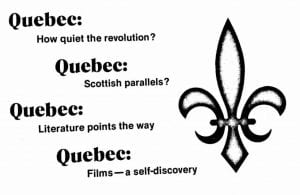
Despite these limits, the pages of Q provide a fascinating window into a period in which the structure of contemporary Scottish politics was taking shape. Looming over everything was the question of devolution. When would it happen? What would it look like? But hovering behind those questions were the rise of the SNP and the possibility of independence. Q hosted animated debates about each of the four main parties and Jim Sillars’s new Scottish Labour Party (SLP); European integration; the implications of North Sea oil; land-ownership and the Highlands; the Scottish universities and their relationship to devolution; the Scottish cultural scene; Irish nationalism; the rise of nationalism in Quebec; and many other topics. Q also prepared for devolution by investigating the delivery of Scottish public services and the scope for their improvement when a new assembly took charge. Health, education, housing, local government, the legal system, and policing were all treated in depth.
The quality of the writing was usually high. Tom Nairn contributed several scintillating articles that are essential to understanding his level of practical engagement with Scottish politics in this period (as a member of Sillars’s SLP), as opposed to his more Olympian pronouncements in his contributions to New Left Review.[3] The SNP theorist Stephen Maxwell was also a regular contributor, penning an important review of Nairn’s book, The Break-up of Britain (1977). Maxwell also engaged the Labour MP John Mackintosh in a fascinating exchange that illuminated the emerging fault-line between Labour devolutionists and independence supporters that was in the event delayed by twenty years because of the failure of devolution to launch in the 1970s.[4] Q hosted a lively debate about the politics of the 7:84 theatre company and their seminal play The Cheviot, the Stag and the Black, Black Oil.[5] Neil MacCormick used Q to challenge the SNP orthodoxy that it would secure a mandate for independence by winning a majority of Scotland’s parliamentary seats. MacCormick argued that a majority of votes rather than seats would be necessary to secure democratic legitimacy for a new Scottish state.[6] This is just a flavour of the range of analysis aired in Q, though it does underline that the magazine’s most influential work tended to be penned by supporters of independence. Some intriguing names and juxtapositions were also to be found among the book reviews, such as David Trimble reviewing Robert Fisk’s book on the recent Ulster Workers’ strike; Ted Cowan reviewing Christopher Harvie’s Scotland and Nationalism; and Donald Campbell reviewing William McIlvanney’s Laidlaw (‘a kind of Glasgow Kojak’).[7] Appropriately, the final issue included a cover feature by Peter Chiene celebrating the 85th birthday of Hugh MacDiarmid. Chiene argued that MacDiarmid’s great achievements in poetry had yet to be matched by Scots in other fields, notably fiction and political theory. But he was optimistic that the rise of the SNP at least indicated that new Scottish political thinking was underway, even if it had yet to attain the heights exemplified by MacDiarmid’s work.[8]
Q was sadly not to play any further role in fostering this novel political thought. Neal Ascherson, for one, felt the loss of the magazine keenly and vented to his diary about the failures he thought it revealed in Scotland’s intellectual infrastructure:
For journalists, Q was quite indispensable, the only place where really free and intellectual argument, as well as many very practical suggestions, took place in print. If Hibernia has a circulation of 20,000 in a smaller country, why could Q not have reached a miserable six or seven? Too ‘Edinburgh’, too identified with the SNP? The real trouble is the extreme weakness and stuntedness of the political intellectual here, and reluctance to commit money and time. Can there only be 1500 people who want to speculate on their country’s future and understand its present, when so many hundreds of thousand vote for a new future?[9]
Ascherson’s lament remains a resonant one for anyone interested in publishing serious analysis about Scotland, even (or perhaps especially) today.
Ben Jackson is Associate Professor of Modern History at Oxford University. He is the author of The Case for Scottish Independence: A History of Nationalist Political Thought in Modern Scotland (CUP, 2020).
[1] Neal Ascherson, ‘Devolution Diary’, Cencrastus, No. 22, 1986, p. 51.
[2] ‘What is Q’, Q, No. 1, October 1975, p. 24.
[3] For example, Tom Nairn, ‘The Radical Approach’, Q, No. 10, July 1976; ‘Scotland the Misfit’, Q, No. 13, 8 October 1976; ‘1931 – A Repeat Performance?’, Q, No. 14, 22 October 1976; ‘Revolutionaries Versus Parliamentarists’, Q, No. 16, 19 November 1976.
[4] Stephen Maxwell, ‘Review: The Break-Up of Britain’, Q, No. 31, 24 June 1977; ‘The Trouble with John P. Mackintosh’, Q, No. 24, 18 March 1977; John Mackintosh, ‘The Trouble with Stephen Maxwell’, Q, No. 26, 15 April 1977.
[5] Ian Bayne, ‘Ideology and 7:84’, Q, No. 3, December 1975; John Forsyth, ‘7:84 Replies’, Q, No. 4, January 1976.
[6] Neil MacCormick, ‘The Mandate Question’, Q, No. 12, September 1976.
[7] David Trimble, review, Q, No. 3, December 1975; Ted Cowan, ‘The Reds and the Blacks’, Q, No. 29, 27 May 1977; Duncan Campbell, ‘MacLaverty and McIlvanney’, Q, No. 29, 27 May 1977 (quote at p. 10).
[8] Peter Chiene, ‘Poets versus Philosophers’, Q, No. 34, 26 August 1977.
[9] Ascherson, ‘Devolution Diary’, p. 51.


